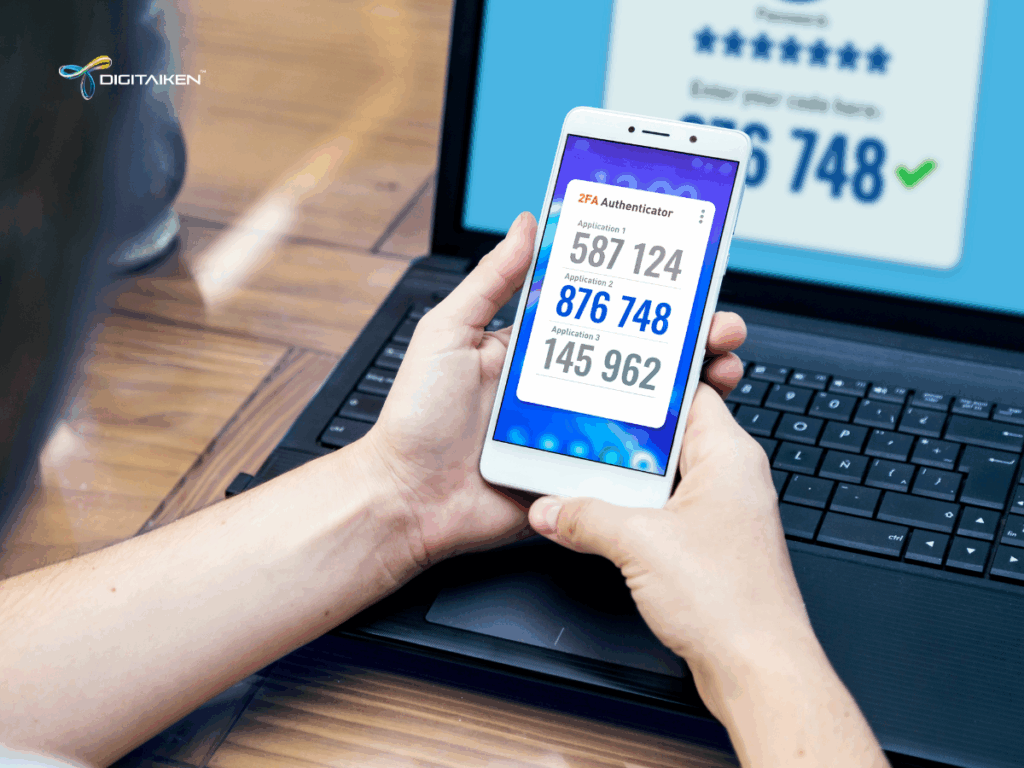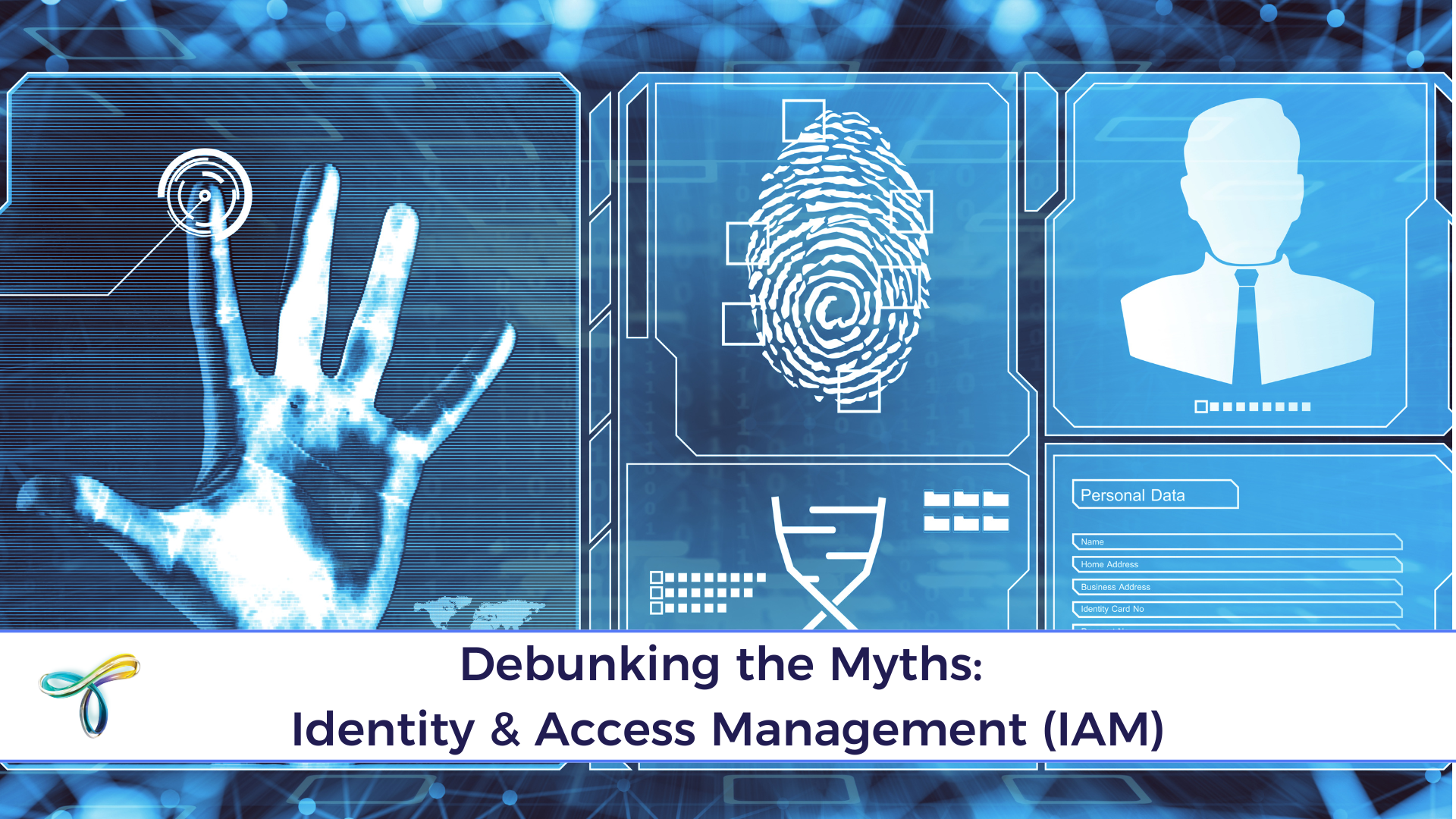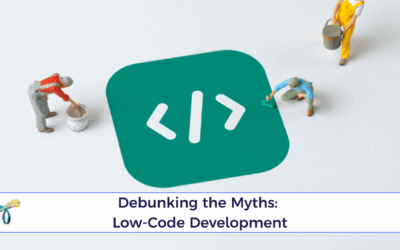IAM Isn’t Just for the IT Crowd Anymore
Identity & Access Management (IAM) has a reputation. For many, it still sounds like something buried deep in IT; Technical, behind-the-scenes, and mainly about passwords. But in a world where remote work, cyber threats, and digital tools are everywhere, IAM is front and centre.
Still, a lot of IAM myths are floating around, slowing down decision-makers, leaving teams unprotected, and letting outdated ideas block better security.
Let’s set the record straight.
Myth 1: IAM is just about passwords
Let’s be honest: most people’s first interaction with IAM is a login screen. But if you think it ends there, you’re missing the big picture.
IAM is your organization’s entire strategy for making sure the right people—and only the right people—can access the right tools at the right time. We’re talking:
- Multi-Factor Authentication (MFA)
- Role-based access control
- Provisioning and de-provisioning of users
- Single Sign-On (SSO)
- Identity governance and auditing
IAM is the security discipline that enables the right individuals to access the right resources at the right times for the right reasons.
So yes, passwords are part of it. But IAM is the system keeping your data safe, your users empowered, and your business running securely 24/7.
Myth 2: IAM is only for big enterprises
Wrong. In fact, small and mid-sized companies often need it even more.
Cyberattacks don’t care how many employees you have. SMBs are often hit harder because they lack the layered security of larger enterprises. According to a report, over 50% of breaches involve small businesses.
The truth? IAM helps any organization:
- Automate account management
- Secure remote work
- Manage external vendors or contractors
- Prove compliance for regulations (yes, even if you’re under 100 people)
Identity is the foundation of security. If you get identity wrong, everything else falls apart.
Whether you’re 20 people or 20,000, IAM matters.
Myth 3: Multi-Factor Authentication (MFA) is enough
MFA is great, but it’s just the start.

It adds a critical second layer of protection, but it doesn’t cover:
- What happens if a device is lost or stolen
- What happens after login
- How long a session lasts
- Whether the access aligns with the user’s actual role
True IAM is about context and control. That’s why platforms like Okta use adaptive policies, where login behaviour, device risk, and location are all factored into whether someone gets access.
Without broader access controls and governance, MFA can’t stop:
- Privilege creep (when users keep permissions they no longer need)
- Insider threats
- Misconfigured apps or APIs
So yes, use MFA—but as one piece of a smarter IAM strategy.
Myth 4: IAM slows people down
It’s a fair concern. Nobody likes jumping through hoops to get work done.
But modern IAM actually removes friction, especially when paired with tools like Single Sign-On (SSO). Instead of logging into 5 platforms with 5 different passwords, users get seamless access with one secure entry point.
According to Okta, organisations that implement SSO report:
- Reduced password reset requests (a huge time-saver for IT)
- Faster onboarding for new employees
- Improved employee satisfaction with access to tools
IAM done right isn’t a roadblock, it’s a ramp.
Myth 5: Once deployed, IAM is done
If only. IAM isn’t a project you finish, it’s a program you maintain.
As your business grows, people join and leave, roles change, and new tools get added. Each of those moments requires your IAM system to adapt.
Without regular reviews and updates, you end up with:
- Over-privileged users
- Dormant accounts still active
- Gaps in audit trails
Okta recommends continuous governance and periodic access certifications to ensure IAM stays aligned with your business. It’s not about more work, it’s about fewer surprises and better control.
Myth 6: Cloud IAM is less secure than on-premises
This one lingers, but it’s outdated.
The reality? Cloud IAM is often more secure.
Why? Because:
- Cloud platforms like Okta update constantly patching vulnerabilities fast
- They offer built-in compliance frameworks (GDPR, HIPAA, SOC2, etc.)
- You get advanced features like real-time anomaly detection, Zero Trust policies, and smart automation
Storing identity data on-site might feel safe, but unless you’ve got a top-tier security team managing it 24/7, you’re likely less protected than you think.
Myth 7: IAM is an IT-only responsibility
IAM may start in IT, but it affects everyone.
From HR onboarding new hires, to finance managing external vendors, to legal ensuring compliance, identity is everyone’s business.
And when IAM breaks, it’s not just IT that suffers. Employees get locked out, customers experience friction, and audits get messy. So, as IAM impacts the whole organization, its ownership must be distributed organization-wide.
The most successful IAM programs? They bring people together, not just systems.
Final Thoughts: Time to Rethink IAM
IAM isn’t about gates, it’s about guidance. It’s not meant to slow your business down, but to secure your speed and support your growth.
As cyber threats increase and organizations expand, IAM must evolve from a background tool to a strategic business enabler.
Because when the right people have the right access—without friction or risk—everything else flows better.
Want to strengthen your IAM strategy?
DigiTaiken partners with teams to implement identity solutions that are flexible, secure, and human-centric.
📩 Let’s modernize your approach, without slowing you down.





